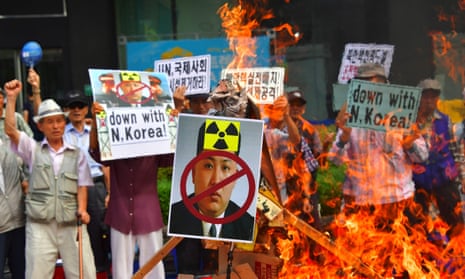The direction of North Korea’s nuclear program has been clear for more than a decade, since it first tested a nuclear device in October 2006. But the pace has quickened, with two nuclear tests and tests of several missile platforms that will reduce warning time and extend North Korea’s capability to credibly deliver a nuclear weapon. The North Koreans have insisted that that they are a “permanent” nuclear state and have signalled that the US is their ultimate target, threatening nuclear strikes on the mainland.
The Obama administration’s primary response, termed “strategic patience”, has strengthened deterrence and has led to a series of United Nations sanctions resolutions designed to increase international pressure. The American goal has been to change Kim Jong-un’s strategic calculus by showing him that having nuclear weapons is detrimental to his regime’s survival.
But economic sanctions have transferred almost all the external leverage on North Korea to China, at the same time that Sino-US strategic mistrust has been growing over the deployment of the Terminal High Altitude Air Defense (THAAD) system to South Korea and China’s unilateral construction in the South China Sea. And Kim Jong-un’s motivations for pursuing nuclear weapons increasingly have been tied to his own domestic legitimacy. Simultaneous nuclear and economic development are his two main strategic goals.
The rapid adoption of an even tougher UN security council resolution against North Korea following its fifth test is an immediate way to signal that the international community is firmly opposed to North Korea’s continued nuclear development. More effective Chinese implementation of already agreed-upon UN sanctions is also essential. But these measures alone will still be insufficient to turn Kim Jong-un back to denuclearization unless China is willing to signal that, despite its core interest in stability, it is willing to put the North Korean regime’s survival at risk through even more stringent application of economic pressure, in concert with the US, South Korea and the international community.
In addition, because North Korea thrives in the gap created by Sino-US strategic mistrust and the most dangerous threat to the Kim regime’s legitimacy comes from South Korea, the most effective way of conveying to Kim Jong-un that his regime’s survival depends on denuclearization would be through coordination of a trilateral strategy among the US, China, and South Korea.
The strategy would involve a coordinated diplomatic ultimatum backed by concrete and coordinated actions that send a clear signal to Kim Jong-un that all three countries are willing to share intelligence with each other with the goal of establishing a replacement leadership in North Korea that is willing to denuclearize. Since China’s primary goal is to avoid instability on the Korean peninsula and a nuclear North Korea’s threatening behavior has become the primary source of instability in north-east Asia, all three countries know well that the only peaceful pathway to long-term stability in the region is for Kim Jong-un to change his mind and pursue denuclearization.
Such an approach is a tall order given growing levels of mistrust between the US and China, but North Korea has always represented the best chance to build a tangible track record of regional security cooperation between Washington and Beijing. Such a strategy would create an opportunity to avoid the immeasurable costs of a second Korean war and lay the ground work for controlled regime transformation through economic development backed by international assistance, at the sacrifice of Kim Jong-un’s nuclear aspirations.
Rejection of such an ultimatum would serve to confirm the possibility that under Kim Jong-un there is no peaceful pathway to denuclearization and that the only road to lasting stability in north-east Asia involves regime change. But it would also reveal that collective management of near-term costs are an inevitable down payment that may in fact help increase the prospect of long-term stability.
- Scott Snyder is a senior fellow for Korea studies at the Council on Foreign Relations and co-editor of North Korea In Transition: Politics, Economics, Security
